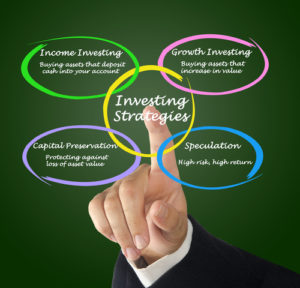 Many investors tell me they want the highest returns for the least risk. However, savvy investors know that to be a myth.
Many investors tell me they want the highest returns for the least risk. However, savvy investors know that to be a myth.
A periodic reassessment of the facts is time well spent for every investor. One where plenty of frankness prevails.
For example, step back and revisit your investor style. Even rethink if it truly fits the financial goals you seek.
My question helps:
“What drives your investing style: “preserve” or “perform” ?
Let’s define these two types:
1.) “Preserve” investors care first about risks they incur. They lean toward capital conservation.
2.) “Perform” investors seek high returns with less concern for risks. They prefer more exciting growth strategies.
Rightly or wrongly, my observation is that the majority are clearly driven and sold by performance. Their exuberance too often chases fleeting past performance, a mugs game at best.
Wise investors know that some portfolio preservation is desirable strategy. However, performance just has far more cachet and always will.
Every family needs to find their acceptable investing balance. That is, between becoming too conservative and throwing caution to the winds.
Establishing your profile
Establishing your true investor profile is both an art and a science. Personal risk tolerances and time horizon are two major influences.
At the end of the day, it’s the risks you take that deliver returns. It’s always prudent to set or rethink your profile vis-a-vis your goals.
Long-term investor profiles are a state of mind based on personal needs.
Here is my overview of six profiles representative in managing long-term portfolios:
Investor Profile |
Sample Asset Mix Targets |
Typical Age Group |
Potential Return/Year |
|
| Stocks | Bonds & Cash | |||
| Conserve | 20% | 80% | 70 plus | Up to 3% |
| Income | 40% | 60% | 60 plus | Up to 4% |
| Balanced | 50% | 50% | 40 to 80 | 4% to 6% |
| Growth | 60% | 40% | 30 to 70 | 6% to 8% |
| Aggressive | 80% | 20% | Up to 50 | 10% to 15% |
| Speculative | 100% | 0% | Up to 40 | 15% plus |
Source: KCM Wealth Management Inc.
Always understand and take control of your investment risks. Your answer to my question dramatically affects the way you invest.
Adopting a prudent risk management profile is your priority one. It helps create a smoother path toward your destination.
 Adrian Mastracci, MBA, is president and portfolio manager for Vancouver-based KCM Wealth Management Inc., specializing in designing and stewarding retirement portfolios.
Adrian Mastracci, MBA, is president and portfolio manager for Vancouver-based KCM Wealth Management Inc., specializing in designing and stewarding retirement portfolios.

